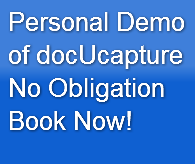There are at least six components that make up the cost of office document filing. No matter how much you do and where you do it these elements are affected by your workflow and needs for office records.
at least six components that make up the cost of office document filing. No matter how much you do and where you do it these elements are affected by your workflow and needs for office records.
-
Payroll: The highest cost of office document filing is hidden within the daily payroll costs of most companies. Years ago filing was a designated role which was undertaken by a secretary or clerk. Today everyone in the organization is a filing clerk, whether it is their own e-mail and documents produced or whether they are dealing with general transactions in the course of business. Because of this the payroll cost of filing has increased substantially.
-
Space: If your office still keeps the bulk of its records in paper format then you are using real estate space to store records. I recently did an analysis for a medical practice and this office had over 200 lineal feet, 8 feet high of filing space. This supported two doctor's efforts. That is a lot of real estate to pay for...and the files had much more space than the three clerks who were squeezed into the offices.
-
Furniture: Paper records take a massive amount of furniture to store, whether in filing cabinets, shelving or other racking. The cost of these fixtures is high and as records grow so do they. Each workstation also has to be equipped with space for filing the paper of the user.
-
Electronic Filing: Storing records electronically does not come free but it does have advantages due to lower space requirements, ability to be backed up and ease of access. Of course all of this depends upon you creating an organized and structured electronic system. Electronic systems based around the windows file paradigm, folders within folders, with folders, within folders......very quickly become unmanageable and confusing. They lead to lost documents and poor retrieval performance.
-
Lost records: The estimated costs of recreating lost records range from $25 to over $200. No matter what decision you make about storing your records, a well thought out indexing and reference structure is needed. Otherwise your users can spend hours looking for key information and perhaps even have to recreate it once again if this is even possible.
-
Communication: Records are created for communicating information needed to run your business. They can be billing records, HR records, shipping records, payables, all of the many things that are needed to keep your business going. In some businesses there are special categories of records such as media, design, marketing materials and other more graphical components. No matter what the record is, it will need to be communicated to others in some way. This could be mailed, hand delivered, e-mailed, faxed, posted for online retrieval....all kinds of mediums for transmission are available today. The costs associated with this dissemination are part of your record costs as well.
These are the six main components of any office document filing system. Whether you continue to store in paper or whether you have decided to work towards electronic means, there are costs involved in what you are doing. Thinking about these components and figuring out how to mitigate the costs can have a substantial impact on your bottom line...the ROI from proper record keeping is real dollars, not hidden ones.
Have you considered ways to improve your record systems? Are your costs of office document filing out of control? Are you paper based or electronic? Which is better? Why? Lots of questions for you to consider...share your thoughts below.
Lee K
Interested in learning more about how you could use electronic filing efficiently?



